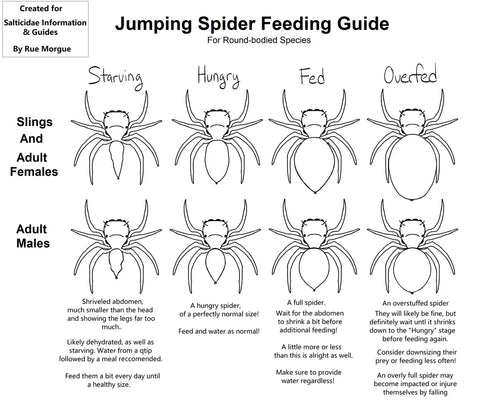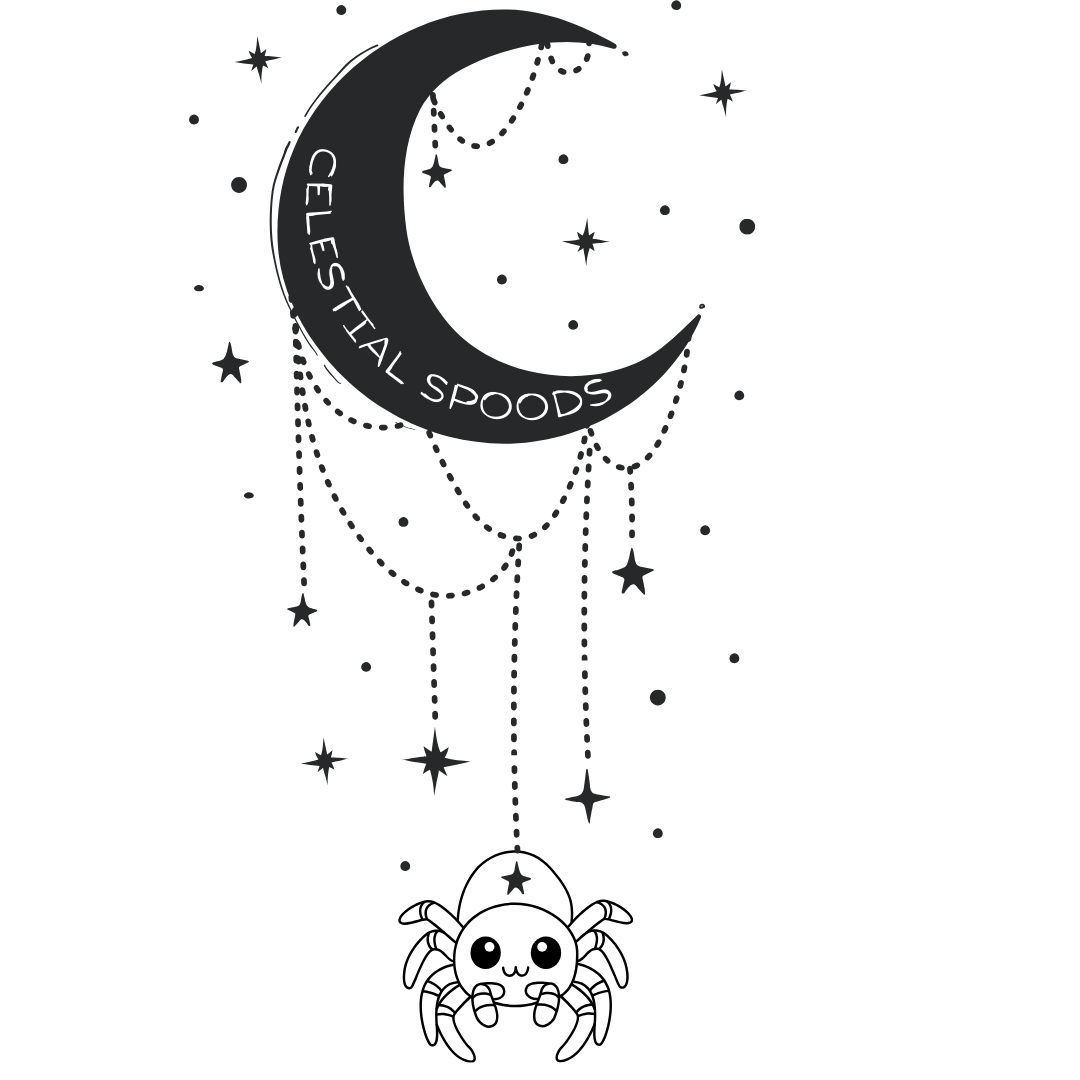Your spood deserves to live their best life
Basic Care
Enclosures/Housing
Size matters! Your sling will need a smaller enclosure. I have used 3x3x4 size range for i5-i8. After that they will require an upgrade. 4x4x8 is a perfect size range. Hunting becomes difficult in an enclosure that is too large. Hang on to the sling enclosure though, because as your spood ages and may not be able to get around as easily, they will do better back in the smaller enclosure. There is less of a risk for injury from a fall if the drop isn’t as high.
Front opening enclosures work better than top opening ones since your spider will make hammocks at the top of the enclosure. You don’t want to disturb those. It’s also very important to have enough cross ventilation. Enclosures with only venting on the top or one side is not adequate and could result in mold.
Non-Bioactive Enclosures
Some types of jumping spiders do well in a non-bioactive enclosure. I have several Audaxes (bolds), Asiatic Wall, Tans and Regals in both types of enclosures and they thrive in either. They just need to have a softer bottom in case of a fall, items to climb on and help with stability, and a hide (3D printed, cocoon, etc).
Bioactive Enclosures
Bioactive enclosures include the items above as well as a natural substrate. I typically use a bioactive kit from a local pet store. A live plant is great to include and a little damp moss on top to keep the humidity up. Adding springtails (or other clean up crew bugs) will help keep mold away and other organic material in check. I also include a thermometer and humidity reader to make sure the humidity is at an acceptable level. I still mist daily and add water to the substrate as needed. If you adopt an Otiosus from us, this is the type of enclosures they will need.
Cleaning
There’s not a lot of cleaning involved, especially if you choose a bioactive enclosure set up. If your spood leaves the leftovers from meals, its best to remove those with tweezers as needed. I spot clean poops as needed with a damp cotton swab. Leave webbing as it’s helpful for them to get around the enclosure, especially as they age. Sometimes I remove webbing that has fallen and collected debris. Never remove hammocks. This is stressful for them. Plus, they worked hard on that!
Molting
Molting will happen at 9-12 times in your jumpers life. Molting is how spoods grow. They shed their exoskeleton to make room for the new, bigger spood underneath. This is a difficult process and not all of them make it through. But you can help give your jumper the best support if you understand what’s happening. If you see your friend building an extra thick hammock, they are likely preparing for a molt. They will go into the hammock and can spend weeks there. Don’t worry. That’s normal. During this time they will not come out to eat or drink. Mist twice daily during this time as the added humidity will help the molting process. They will eventually kick out the old exoskeleton. There is no need to clean it up for them. It takes a few days for the new exoskeleton to harden. When your spood feels safe to do so, they will come out for a well earned meal. Please remember this is a long process for some spoods. Please don’t disturb them or force any food into the hammock. I know from experience it’s difficult to be patient and can be scary when your friend has been in hiding for weeks. It’s so worth the wait when you see them with a new outfit tho!
Molting & Instars
Each time a jumper molts, it goes up an instar. When they hatch from the eggs, that instar 1 (i1). They will molt again (i2) before they leave the egg sac. Each time they molt they will be bigger and possibly even be a completely different color! Around i4, they will need to be separated into individual enclosures, or as soon as they become aggressive with each other. They will eat each other (yikes!) if left together too long. The life stages are sling (i1-i4), juvenile (i5-i6), sub adult (i7-i9), adult (i9+).
Temperature/Humidity
Jumpers do best between 70-80 degrees F. Humidity levels should stay between 60-80%. Never place the enclosure in direct sunlight. Never use a heat lamp. If additional heat is needed, you can put a warming pad behind (NEVER UNDER) the enclosure(s). You can use reptile heating pads. I personally use seed starting heating pads. They are less expensive and tend to not be as hot so the risk of overheating is minimal. Keeping a thermometer and humidity reader in the enclosure will help keep track of levels.
Lighting
Never put your Spood’s enclosure in direct sunlight, but they do require bright light on a 12 hr on/off cycle. I have several USB LED lights on a timer so I don’t have to think about it. They need bright light to hunt effectively. And I notice mine like to build daytime hammocks right where the light hits the top of the enclosure. Make sure the lights you choose to use are not heated.
Food
Jumping Spiders are easy to feed for the most part. I have had some picky eaters but the majority of them are good eaters and are fine with a variety of prey. Fruit flies are the primary diet of slings and small juveniles. They aren’t a substantial enough meal for i6+, however. My spiders enjoy red runner roaches, small dubia roaches, green bottle flies (and spikes), house flies, etc. You can also feed small crickets and mealworms, but use caution as sometimes these meals will fight back and injure your spider. Never leave crickets or mealworms in the enclosure alone with your spood. It is also advised to never feed your spider a wild caught prey. These meals could contain parasites, pesticides, etc. It’s always best to buy feeders or produce your own cultures.
How to tell if your jumper is ready to be fed.
I have found that each spider doesn’t eat on the same schedule as the others. Once they are past the sling time frame, it’s best to feed them based on abdomen size.
Feeding Guide created by Rue Morgue

Females & Egg Sacs
All females will lay egg sacs after they have reached adulthood. If your jumper has never been paired, the eggs will be infertile and can be disposed of once she abandons the sac. Allow her to guard as long as she sees fit to reduce her stress level. I have one female who lays an infertile sac and eats it so I never have to worry about it. I have another who lays infertile eggs and guards them for weeks. They are all a little different. If your spood is wild caught or already an adult when you adopted her, she may lay fertile eggs. If you are not prepared to be a spiders grandparent, we recommend reaching out to breeders near you to see if they would take them off your hands. If the spider is native to your area, you can also just release them into the wild. Please do not do this if it is not a native species.
